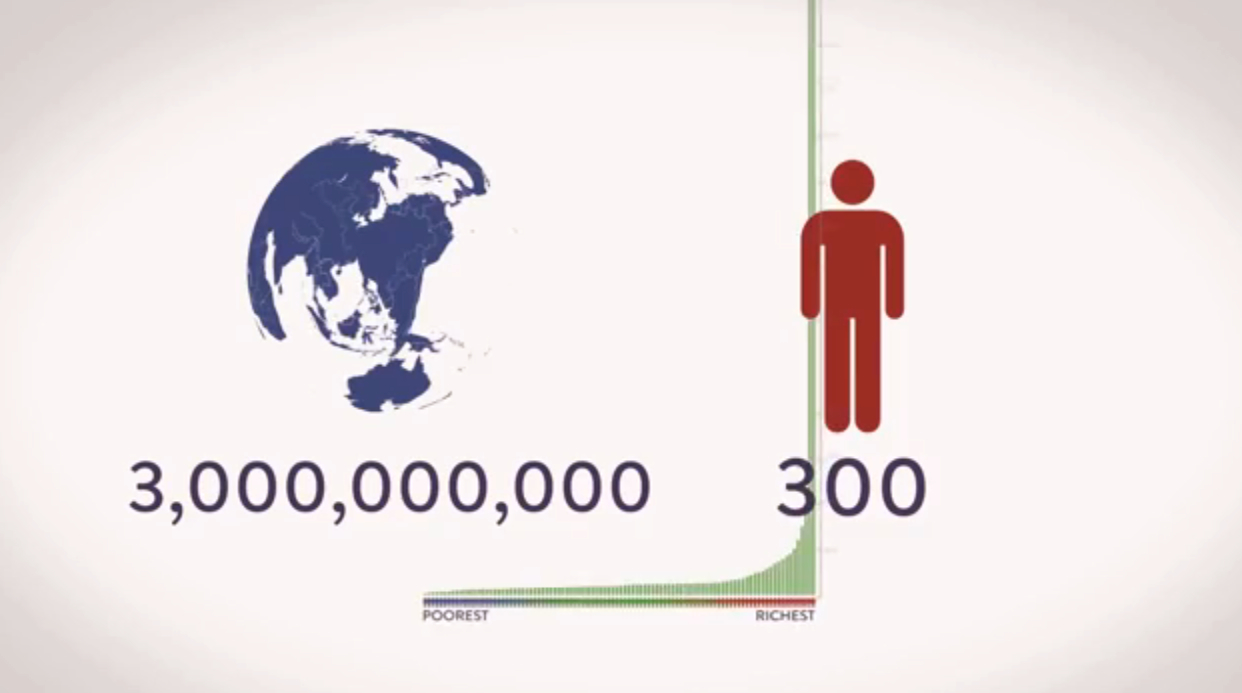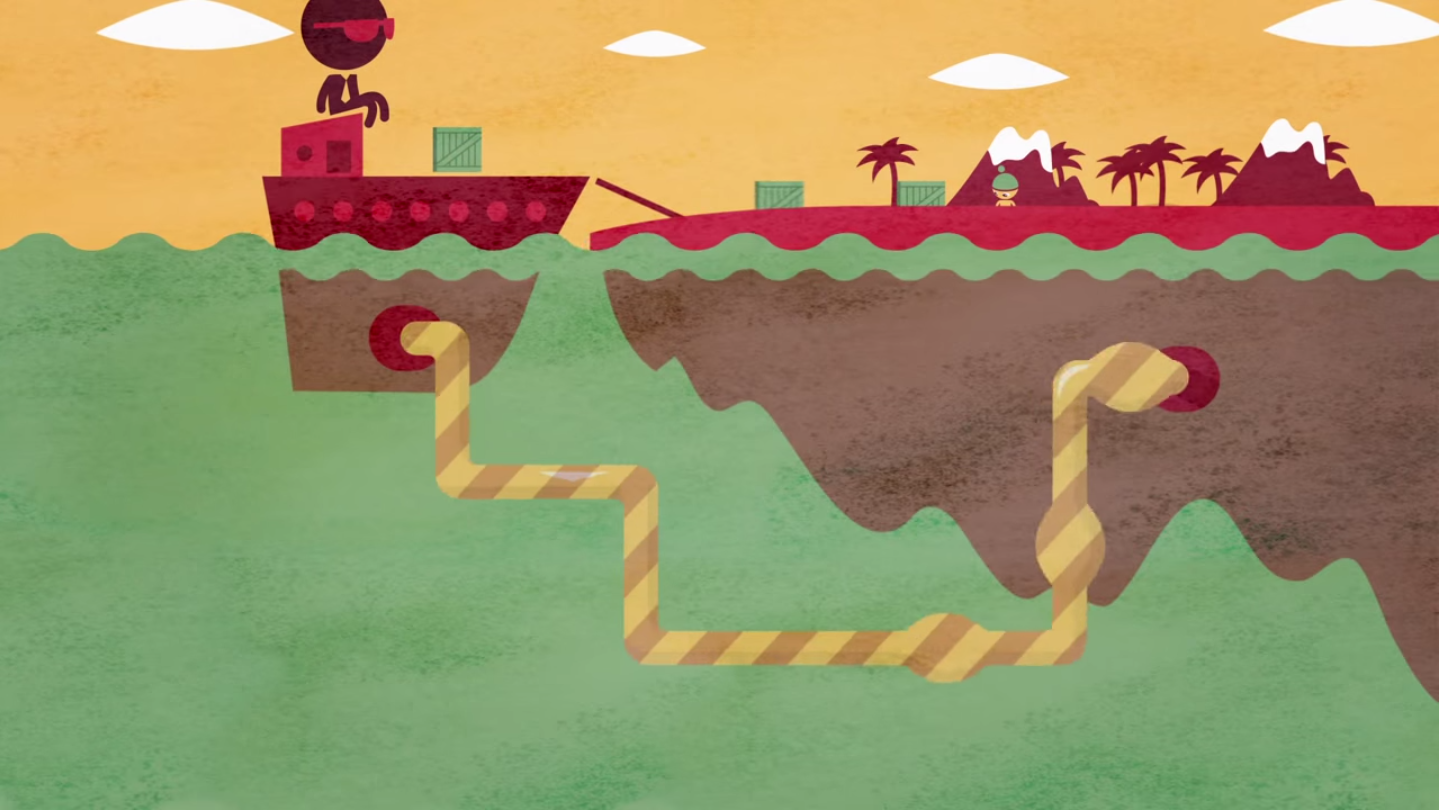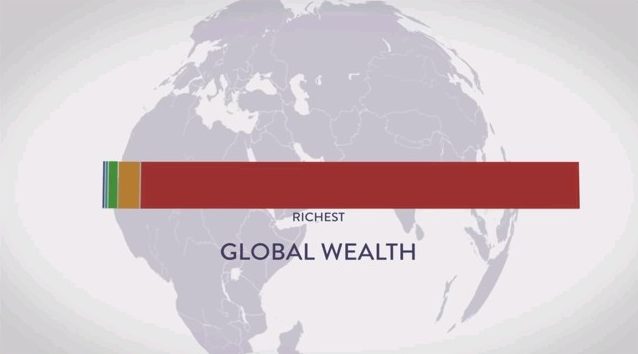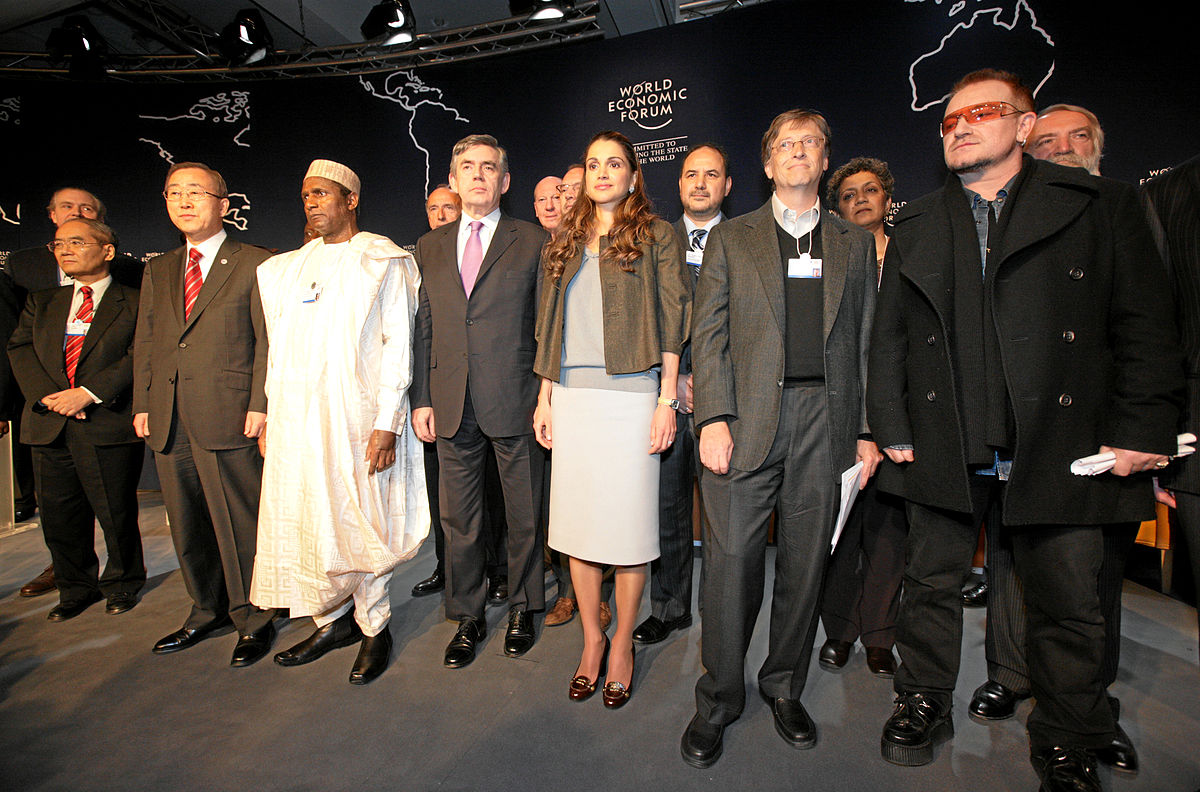
Originally published in Truthout as ‘Beware the Best of Times’.
As the Davos class head off from their annual get together in Switzerland, it’s a good time for a quick stocktaking of the stories we’re told about global affairs.
There are, essentially, two grand narratives about these times we live in. We can think of each as a kind of foundational logic, invoked as a way to frame the vastly complex reality we see all around us, and therefore help determine how we understand and respond to it.
One says that whereas there are of course problems, we’ve basically never had it so good. The other says, whereas there are of course lots of positives, we’ve got the fundamentals of economics and politics so badly wrong that we’re risking our very survival.
The Best of Times
The best of times narrative draws on a cluster of evidence. The most important is how much wealth there is. The human race, it says, has never been wealthier than we are today; since 1980, global GDP has grown by an astonishing 635 percent. Since wealth is commonly used as a proxy for well-being, this feeds a deep sense that we have never been better off, overall. There are reams of data to support this: The World Bank says the number of people living in extreme poverty, which it defines as living on less than $1.25 a day (adjusted for purchasing power parity), has dropped roughly 30 percent over a comparative period. Similar downward trends can be seen in hunger, child labor, child mortality, maternal deaths in childbirth, illiteracy, incidence of violent conflict and so on. In other words, not only has the wealth pie exploded, but humanity as a whole is reaping the benefits.
Focus on these facts and one conclusion shines through – whatever we’ve been doing, we need more of it. In practical terms, this means more GDP-defined industrial growth; more, if hopefully greener, consumption and production; more “a rising tide lifts all boats” economics; and more foreign aid-based development. It is unleashing enormous progress pretty much everywhere, and whereas no one denies there are problems, the direction of travel is as positive as any reasonable person could expect. The cornerstones of this narrative are that extreme poverty has been halved since 1990 and can be eradicated by 2030.
The Worst of Times
The worst of times starts with structural fissures. Rising wealth inequality is currently top of the popular list, followed by climate change and poverty. All three, it says, are evidence of fundamental, even lethal, flaws in the operating system. This narrative has its own library of evidence. Inequality within and between countries is rising steeply, and so aggregates – e.g. GDP growth – are profoundly misleading. The reality is more accurately captured by killer facts such as those Oxfam put out in January showing that the richest 1% are on track to have as much as 50 percent of global wealth by 2016.
As for global poverty trends, it says the data have been so manhandled over the years that their only real value now is as political and marketing tools. Lies, damn lies, and statistics. Most importantly, the World Bank’s $1.25-a-day poverty line is so low as to be insulting. Some economists argue that a realistic figure would be more like $10 a day.
The UN body UNCTAD has determined that anyone living on less than $5 per day is unable to achieve “a standard of living adequate for health and wellbeing” – the inalienable right enshrined in the Universal Declaration of Human Rights. If you use that figure, a soul-scorching 5.1 billion people are living in those conditions today. That’s close to 80 percent of humanity.
Then, there’s climate change. No one with a level head disputes the basic science, which is predicting between a 3 and 5-degree Celsius rise in global mean temperatures by 2100. Left unchecked, this will decimate the planet’s biodiversity, unravel the fabric of economies, uproot whole societies and outright kill hundreds of millions, if not billions of people. And this doesn’t begin to talk about instability in the global financial system that could pull the rug out from under, well, everything.
In other words, real-life poverty, far from having been halved, is endemic, and the idea that it can be eradicated by 2030 is ridiculous because of the false accounting base it starts from, the willful blindness to systemic threats it invites and, critically, because it is a necessary feature of the current system. The poor must be kept so poor for the rich to be so rich.
Focus at this level and one conclusion is obvious: Whatever we’ve been doing, we need to change it, in a hurry, and at the level of operating principles. At the top of the list is what we mean by progress, which leads to the design of the money system and the centrality of debt; growing private (i.e. corporate) influence in both national and global politics; and overall levels of production and consumption.
Motivations and Tricks
The two narratives not only call on different facts; they use different paradigms. The former is concerned with what we seem to have got right and sees such goodness and achievement that it logically embraces the idea that we need more of the same system, albeit with some tweaks. The latter doesn’t deny progress, but says it’s not what we’ve achieved so much as what security and morality demand, and that unless the fundamentals evolve significantly, nothing will really change.
This juxtaposition would be important at any time, but is critical this year because this is the year of the UN Sustainable Development Goals (SDGs). In September, heads of state will gather in New York to agree on this next-generation agenda. Right now, the overwhelming bulk of the actors involved – from most large NGOs togovernments to the World Bank to corporations – have chosen to headline the best of times. It’s been building in the niche world of international development for a while now and will make itself felt in mainstream media in the coming months, thanks towell-funded public campaigns.
It’s easy to see the appeal. It’s a marketeer’s dream: It is hopeful, compelling and, critically, it bathes both the people speaking and the product they are selling (the SDGs) in a positive light. It thus feeds off a deep thirst for hope in a world that, to the mainstream audience they crave, feels increasingly unknowable and dangerous, and then validates the logic of the status quo. It also makes it more likely that we might end up with a toothless wish list that feels palatable because hope and dreams are what we expect the development industry to trade in, rather than the hard work of system change. That’s a very neat trick.
Ultimately, though, it is just a trick, a distraction, that massages the truth out of the picture. It denies the deep cracks in the edifice that might end up undoing genuine gains and sets up expectations that, like fast food, can taste great today, but will assuredly be regretted tomorrow. It is certainly no basis for expanding understanding of the systemic flaws that drive inequality, poverty and climate change. Indeed, it’s worth wondering if it is deliberately so.
The alternative is not to abandon hope, but to use it to unlock the courage to stare deeply into our challenges. Societies throughout history have risen to challenges every bit as daunting as ours. If we direct attention to the level of the system and its operating principles, if we model ways of describing the whole rather than deploying only positive half-truths and disingenuous hope, we have every reason to believe we can help create a real best of times. Step one: Speak to the whole truth.








Speak to the whole truth.
we will have to insist on that at any time!
Getting ourselves out of the trap of poverty is complex, the Global Capitalist system is confusing and complicating it to constantly benefit the few and is being aided by instruments like SDGs! Many thanks for the cogent narrative.